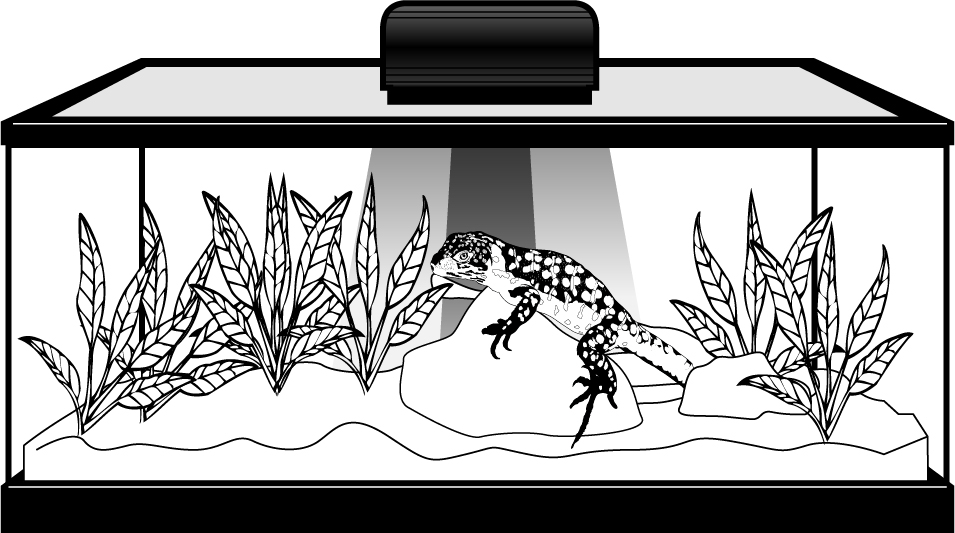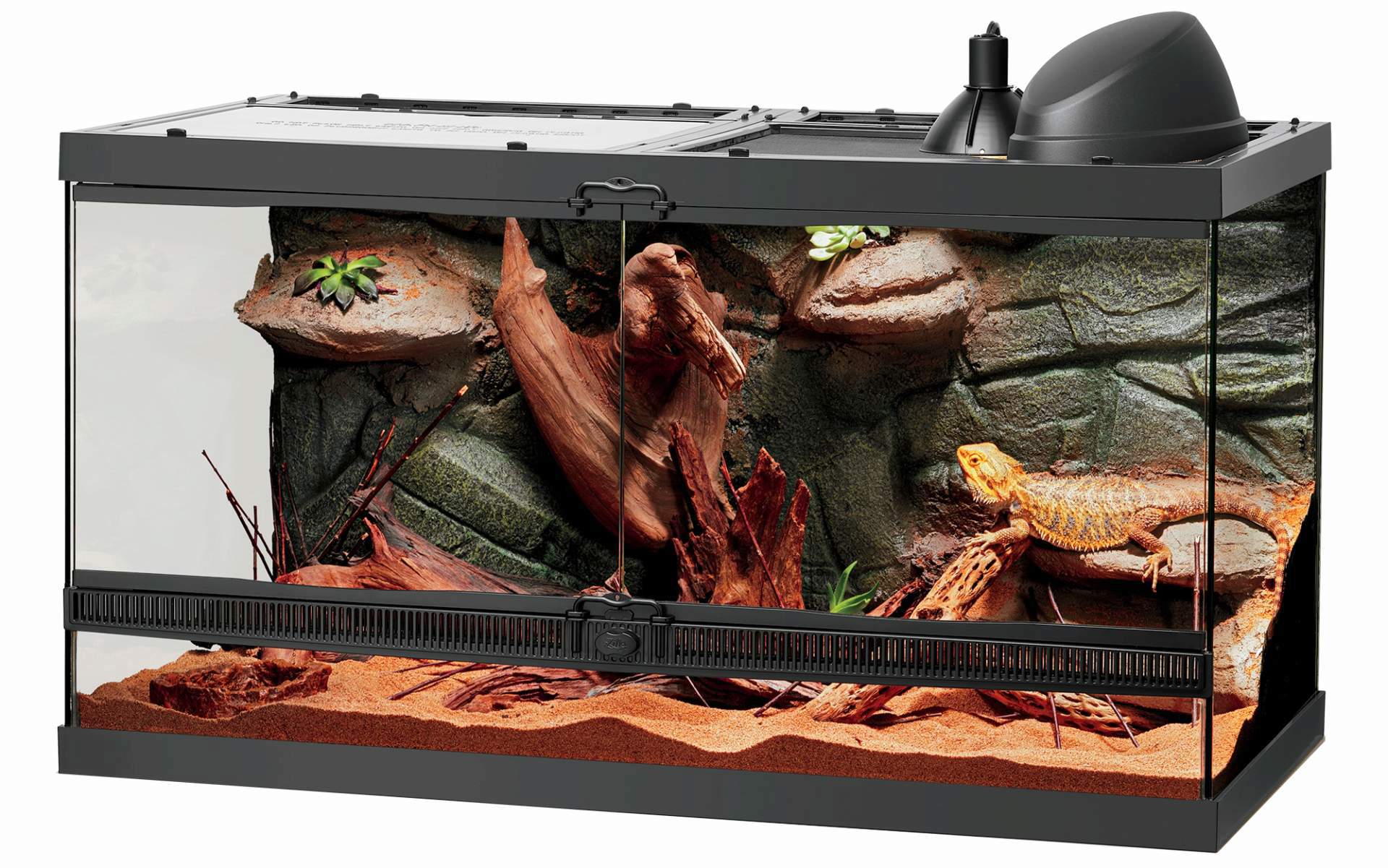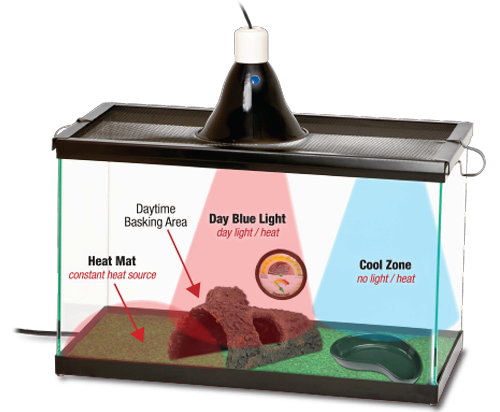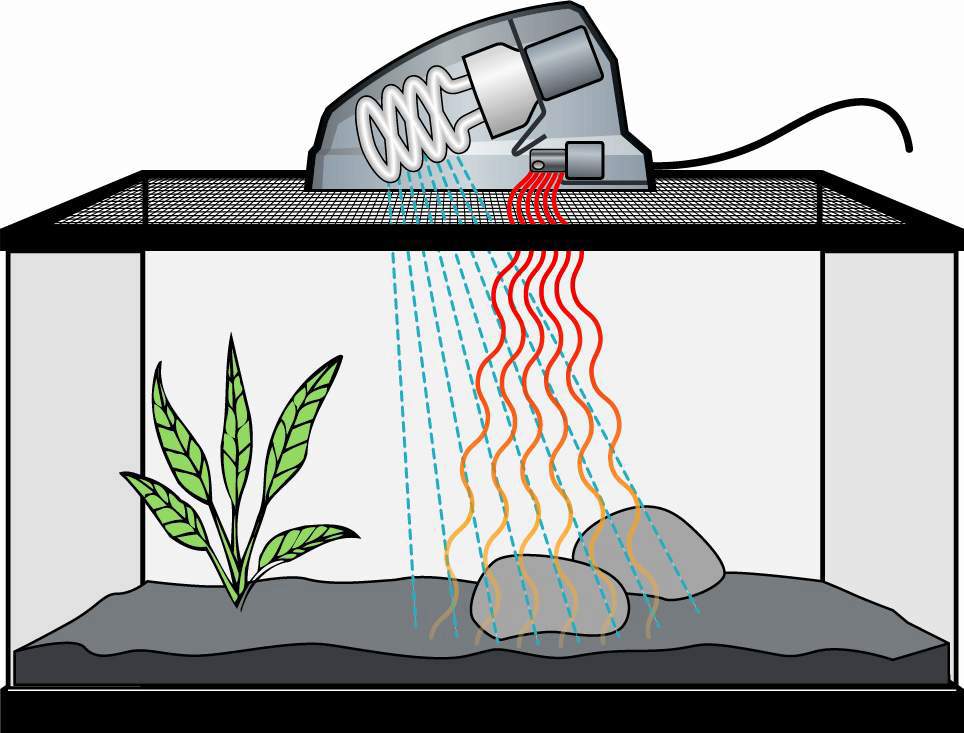How to Create a Proper Day & Night Cycle in Your Terrarium

When creating a habitat for any kind of animal there are many factors to consider. It’s important that you create an atmosphere that matches your pet’s natural environment as closely as possible, this includes re-creating a day and night cycle.
Like people, all animals rely on their environment to tell them when it’s okay to sleep and when it’s okay to be active. Sunlight (or artificial sunlight) plays a major role in influencing an animal’s daily schedule, and their circadian rhythm. Circadian rhythms are physical and mental changes that dictate behavior following a 24-hour cycle which is greatly affected by light and darkness in an organism’s environment. This rhythm influences important bodily functions such as sleep-wake cycles and hormone release which in turn affect your pet’s mental state. If your reptile isn’t sleeping right, or is off its regular schedule, it may become stressed out and unhappy. In order to best care for your pet you need to create a day and night cycle that matches with their biological clock.
All diurnal (definition: active during the day) reptiles should have access to UVB (which stands for ultraviolet B) light. Turtles, tortoises, bearded dragons, iguanas, and chameleons are some common examples of reptiles that need UVB light. This helps prevent animals from developing hypocalcemia (or lack of calcium). UVB lights should be kept on during the day and turned off at night and should be used along with calcium supplements. Do not keep UVB lights on all the time as this can cause another problem, hypercalcemia (too much calcium).
Do the research for the specific animal that you have, but a good rule of thumb is to program the UVB and daytime light/heat to be on for 12 hours and then turned off for 12 hours. During the 12 hours when bright lights are off, there should still be nighttime heat (black or red bulbs, heat mat, or ceramic heat emitter), this is also a time when the animal can get some rest without bright light distracting them.
The information below will provide you with steps to take to keep your little friends happy and healthy.
Research Your Reptile's Native Environment
Where does your pet originate? Using bearded dragons as one example, they come from the Australian outback which is a desert environment. Therefore, they would need a certain amount of UVA and UVB radiation from the sun to be healthy. You can provide them with the heat and UVB needed using a Heat & UVB Fixture with a 50W Mini Halogen Bulb and perhaps a Desert Series 50 UVB Bulb, depending on the fixture type. Without UVB, Bearded Dragons can develop Metabolic Bone Disease (MBD) resulting in deformations and eventual premature death.
Aside from the type of animal, you should also consider the animal’s age or if their environment has a seasonal change you should be aware of.

Learn the Four Important Reptile Temperatures for a Happy Habitat
1) Basking
2) Warm Side
3) Cool Side
4) Night Time
The different temperature types to focus on are Basking, Warm Side, Cool Side and Night Time. Basking is a small footprint of the habitat that is very warm. Bearded dragons bask at 125-140°F, while ball pythons bask at 94-96°F. Just outside of that focused light is a warm side of the tank. It’s usually 10°F cooler, but with beardies and other desert species it’s around 95°F. The cool side is the minimum average temp you’d want, so usually around 75°F, and night temp is about the same but steady throughout the night.
To find out what temperatures are best for your pet, download our Habitat Guide which provides these temperatures, a humidity range and UVB/UVA lighting needed for various types of snakes, turtles, tortoises, lizards, geckos, chameleons, frogs, toads, newts, and salamanders.
Create a Gradient of Temperatures
With basking, warm side and cool side, you create a heat gradient across the terrarium (horizontally for terrestrial animals, and vertically for arboreal). This allows your animal to regulate their body temperature at their convenience.
To most accurately monitor terrarium temperature and humidity we recommend a digital hygrometer thermometer.

How to Choose the Right Heating Element for Your Pet
Choosing the correct tools for the job can make or break your reptile habitat. You should avoid heat rocks at all costs as they can get too hot and burn the sensitive underbelly of your reptile. All heat tape and heat cable needs to be regulated with a thermostat.
Here is a quick rundown of some commonly used dependable heating elements:
1) Ceramic Heat Emitters project a penetrating heat that generates no residual light, so it will not interrupt sleep patterns. These are perfect for night time temperatures. They also outperform incandescent bulbs in both heat output and working life.
2) Mini Halogen Bulbs pinpoint healthy light and essential heat in the reptile enclosure using less power. When it comes to lights as heat, Zilla Mini Halogen Bulbs are the most efficient and innovative product on the market for heating and lighting.
3) Aquatic Reptile Heaters are fully submersible heaters made to provide consistent warmth for aquatic reptiles. The Zilla Aquatic Reptile Heater is preset to 78 degrees is durable and safe with automatic shut off.
4) Heat Mats efficiently radiate infrared waves creating uniform heating without hot spots. They can be mounted either underneath or on the side of the terrarium and are an excellent way to create a heat gradient. Zilla’s heat mats are the safest on the market and use a carbon fiber technology that doesn’t allow the material to get over 113°F. All other brands of heat mat should be used with a thermostat to avoid overheating.
Heat & UVB Basking Fixtures
The Zilla Heat & UVB Basking Fixture's unique design creates a basking area where heat, light and UVB are concentrated. It can be used for both desert and tropical habitats. This fixture creates a concentrated basking spot with overlapping UVB rays. Moreover, it has the same effects as a mercury vapor lamp but uses less energy.
The Zilla Pro Sol Light Fixtures are the newest in the line of lighting. This fixture provided the most streamlined appearance above the terrarium while also providing customizable sockets for heat, light and UVB and a separate nighttime light socket. Each socket uses efficient G9 lighting. The fixtures come with or without a built-in timer.
For more information on heat or basic illumination visit Zilla’s Lighting & Heating page. Once you mastered lighting and heating check out our other environment guides and care sheets to learn about the unique needs of your pet. From bedding types to fine reptile cuisine, make sure you’re providing your little friend with all the comforts of home.
A warm, well-rested reptile is a happy reptile. Follow these guidelines and you’re sure to build a terrarium your pet will be proud to call home!

Please join our newsletter, connect with us on Facebook or contact us for more information.
